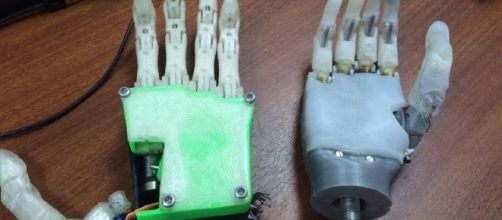In the past, no bionic man was able to feel from his Bionic Arm or leg, but this is expected to change. A new prosthetic technology is now in play that will allow amputees to feel again, which should be seen as a breakthrough in science and technology.
The first human to go under the knife and get this procedure done is Dennis Aabo Sørensen. It is understood that Sørensen lost his left hand in a fireworks explosion at a 2004 New Year's Eve celebration. Luckily, for Sørensen, technology has improved dramatically over the last 10 years since he lost his arm, to the point where he can feel again.
How does it work?
To get Sørensen to feel via this new bionic arm, surgeons chose to implant electrodes into his nerves, which are then connected to the bionic arm. It doesn't give Sørensen genuine feeling, but it allows him to distinguish objects by their shape, size, texture, and weight without having to see what it is.
Sørensen was quite impressed with the technology and that he was able to feel in left arm for the first time in years.
"Suddenly you could see my left hand was talking to my brain again and it was magic," said Sørensen describing the first moment he could feel. "It was surreal. I grabbed the object in my hand and knew it was round.
It was a baseball."
His children were also impressed with what they saw
"It is the first time that an amputee has had real-time touch sensation from a prosthetic device," said Prof Silvestro Micera from the Ecole Polytechnique Federale de Lausanne and Scuola Superiore Sant'Anna, Pisa.
Scientists and robotic experts from Italy, Switzerland, and Germany, were the ones who carried out the research project. They have been working on this project for years and has finally experienced some success.
Still, while it has proven to work, the sensors were, unfortunately, removed from Sørensen's arm due to safety regulations and the fact that the bionic arm is a prototype. Despite the sad ending to this beautiful story, we have to consider that this test has proven that the technology is real and speaks a great deal of what kind of future we are approaching.
Hopefully, the researchers find a way to give Sørensen his own bionic arm to carry home after all this hard work.
Due to the expensive, he won't have his own arm anytime soon, but things could change.
Should this piece of technology take off in a huge way, it could e the d cycle of people unable to walk and move around freely. Furthermore, we'd love to see more trials of the tech in action.


